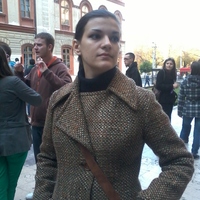Marija Kreckovic
University of Belgrade, Archaelology, Graduate Student
•
Publication Date: 2019
Publication Name: Digging in the Past of Old Europe. Studies in Honor of Cristian Schuster at his 60th Anniversary (eds. V. Sîrbu, A. Comşa, D. Hortopan). Editura Istros a Muzeul Brăilei “Carol I”, Târgu Jiu – Brăila
•
Mokrin necropolis, situated in the northeastern part of the Republic of Serbia, is one of the most important Early Bronze Age cemetery sites and has been the subject of numerous studies aiming to answer important questions about social... more
Mokrin necropolis, situated in the northeastern part of the Republic of Serbia, is one of the most important Early Bronze Age cemetery sites and has been the subject of numerous studies aiming to answer important questions about social structure, culture and physical anthropology of the Early Bronze Age communities. However, the chronology of the necropolis is still poorly grasped – with only six radiocarbon dates placing the necropolis within the wide limits between 2100 and 1800 BC, fine-tuned
chronology, especially when it comes to the relative sequence of graves, is a difficult goal to achieve, which in turn impedes deeper understanding of important anthropological and historical questions. Previous studies that tried to establish the relative chronology of Mokrin necropolis made use of analogies with other sites and seriations based on the presence/absence of traditionally (subjectively) established types of grave goods. In this study we revisit the issue of the relative chronology of the
Mokrin necropolis. We recorded the shape of the pottery vessels using morphometrics in order to have objective measure of vessel form variation as a basis for the phyletic seriation. Multivariate statistics is used to derive seriation solutions based on different metric attributes combined with qualitative attributes. We compare our results with previously proposed chronologies and to the available radiocarbon evidence.
chronology, especially when it comes to the relative sequence of graves, is a difficult goal to achieve, which in turn impedes deeper understanding of important anthropological and historical questions. Previous studies that tried to establish the relative chronology of Mokrin necropolis made use of analogies with other sites and seriations based on the presence/absence of traditionally (subjectively) established types of grave goods. In this study we revisit the issue of the relative chronology of the
Mokrin necropolis. We recorded the shape of the pottery vessels using morphometrics in order to have objective measure of vessel form variation as a basis for the phyletic seriation. Multivariate statistics is used to derive seriation solutions based on different metric attributes combined with qualitative attributes. We compare our results with previously proposed chronologies and to the available radiocarbon evidence.
